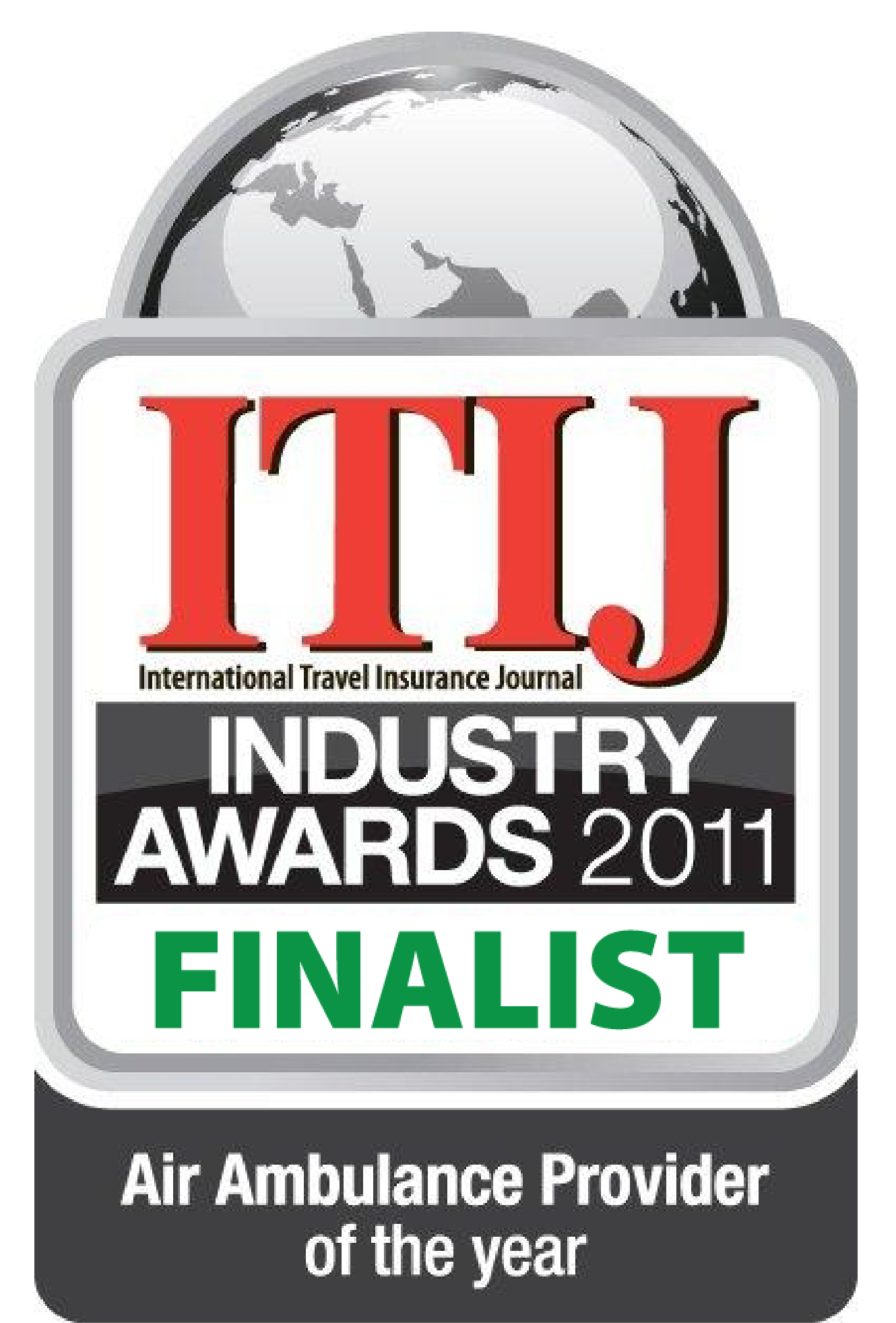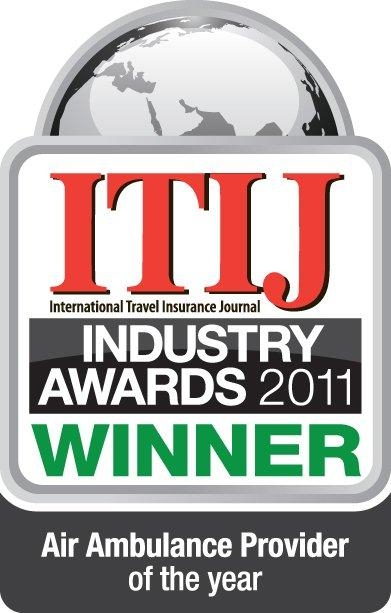Air ambulance fleet choices
Dr Bettina Vadera, Chief Medical Adviser for AMREF Flying Doctors, discusses the pros and cons of choosing a varied fleet of aircraft or one uniform aircraft type
An air ambulance service is a specialised transportation service aimed at providing rapid patient transfer by air in a medical emergency, extracting patients from remote areas, facilitating an inter-hospital transfer, or repatriating patients back to their home countries over long distances.
The use of an air ambulance service can make a significant difference in the outcome for patients with critical health conditions, in disasters, or when specialised care is required that is not available nearby. It is an essential aspect of modern emergency medical services.
The most expensive component for an air ambulance company is the cost of the aviation operations, including aircraft acquisition or lease, maintenance and fuel, aircrew salaries and training, aviation insurance, etc. In order to ensure that the aircraft used for air ambulance services meet the specific operational requirements, some key factors need to be considered.
Mission range
The distance that the air ambulance aircraft will need to cover determines the suitability of a specific aircraft type. While short-range missions might be served by helicopters, mid- and longer-range flights will need fixed-wing aircraft. Depending on the distance of the aeromedical transport, airplanes with greater range, faster cruising speeds and higher altitude capabilities may be preferred as they reduce the number of refuelling stops, the overall travel time, and may offer smoother flights above turbulent weather.
Cabin configuration
The chosen aircraft must have a cabin that can be medically configured to the necessary specifications, including the installation of a regulated stretcher system. Medical personnel must have sufficient space to operate, with good access to the patient, the medical equipment and monitoring devices.
The most expensive component for an air ambulance company
is the cost of the aviation operations
Patient capacity
Aircraft vary in size and capacity. The choice will also depend on whether the focus is on individual patient transport or the capability to handle multiple patients. Where multiple patients are to be moved simultaneously, extra stretchers or seats and additional medical staff with equipment may be required.
Runway requirements
Some aircraft, in particular jet aircraft, require longer runways with smooth tarmac surfaces, while others are designed for short takeoff and landing and can operate in more confined, remote or rugged terrains.
Reliability and maintenance
Having an aircraft on ground for technical or maintenance reasons poses an inevitable financial burden on every air ambulance operator. Reliable access to a certified, type-rated aircraft maintenance facility that can service the operator’s aircraft fleet locally, with a good global network for parts and maintenance support, can minimise downtime and improve consistent service availability.
Cost efficiency
Aircraft are the cornerstone of any air ambulance service. They are also the most expensive component. The capital investment and the operating costs for different aircraft types vary greatly. It is important to evaluate the trade-offs between the cost of the aircraft, its fuel efficiency, maintenance and operational benefits, as well as having the suitable aircraft for the company’s mission and business profile.
Depending on location, operational needs, geographical coverage, types of missions and financial factors, an air ambulance company may own and or operate a varied fleet of aircraft or one uniform aircraft type. Both approaches have benefits and drawbacks.
A mixed-fleet operation is definitely advisable for a company that serves a diverse geographical area with a wide range of mission requirements, while a more specialised air ambulance service might benefit from the simplicity and cost savings of a uniform fleet.
However, ultimately, the decision to own/operate a diverse or uniform aircraft fleet is a strategic decision that air ambulance providers must make based on a careful analysis of the service’s needs, the expected mission profile, its business model and long-term goals. It will also depend on the company’s location and the geographical environment with respective distances and demographics, including the availability of facilities that complement the service, such as airports/landing sites and hospitals.
On the example of AMREF Flying Doctors (AFD), an air ambulance provider based in Nairobi, Kenya, serving the Eastern African region, a vast and remote area of approximately 3.8 million square kilometres, as well as repatriating patients on long-haul missions to Europe and other continents, the company needs a diverse fleet of aircraft. AFD has been engaged in aeromedical services for decades and has optimised its fleet according to the mission profiles and business needs. With two Pilatus PC-12 turboprop aircraft and three jets, mid- to long-range (Cessna Citation C550, C560 and C680), AFD is able to respond to medical emergencies in the remote areas of the region, as well as transporting critical patients over long distances. Depending on the aeromedical transport needs for each mission, considering the challenging operational environment, AFD has a flexibility within the fleet to provide an efficient and cost-effective air ambulance service, meeting aeromedical quality standards and customer expectations, while running a sustainable business.
Shortly after the first contact, AFD was able to confirm that the patient held valid insurance and coverage and started making arrangements for the patient to be transported in a more adequate facility. It was determined that a transport to Nairobi, Kenya, was the best option for better medical access, as well as for organising the patient’s repatriation home. Quotes for the evacuation to Nairobi via Air Ambulance were obtained and the flight done by the AFD Team was confirmed for the following day at first light, as Arusha Airstrip is a daylight operation only.
Whilst AMREF Flying Doctor’s aircraft was on the way to Arusha, the hospital bill was settled, and the patient was prepared for transport. Upon arrival, AFD’s team picked up the patient from the hospital as per AFD’s policy of bed-to-bed-service, to assure seamless treatment and monitoring throughout the transfer.
As Nairobi had not been a planned destination for the patient or his wife, AMREF Flying Doctor’s team assisted with several services, such as placing a payment guarantee at the hospital, obtaining a phone SIM card for the patient’s wife, and arranging a hotel for her near to her husband’s hospital.
The patient remained in hospital for 24 days, during which he underwent various tests and investigations, had a surgical intervention for the fractures, and underwent physiotherapy. AFD’s medical team continued to monitor his progress, and when the patient was eventually declared fit to fly on a commercial airline with medical escort, AFD was tasked to arrange the same.
Being well versed in arranging commercial escorts worldwide, AFD’s team started the process by obtaining medical clearance from the commercial carrier that would take the patient, his wife and AFD’smedical escort back to Canada. AFD also purchased the tickets, arranged for ground ambulance and wheelchair assistance throughout the trip, and coordinated his arrival back home.
An in-person pre-flight assessment was performed by AFD’s medical escort prior to the flight to assure that the patient was sufficiently stable and well informed about all steps of the trip.
The repatriation went very well, the patient remained stable and was comfortable at all times. Upon arrival in Ottawa, the AMREF Flying Doctor’s team escorted the patient and his wife to his residence and returned to Nairobi the day after.
Another successful case and mission done by AMREF Flying Doctors – who are equipped for all kind of assistance and aero-medical needs in Africa. Due to AFD’s deep understanding of the circumstances and longstanding experience in providing medical services and assistance in Africa, AFD’s team could support the client on every step of the way. From the first medical information, followed by the initial aeromedical transport to the nearest centre of excellence, covering the costs in all hospitals, to the commercial medical escort that brought the patient home AMREF Flying Doctors was always there for the patient, while helping the insurer to fulfil the obligations towards his client in the best way possible.








